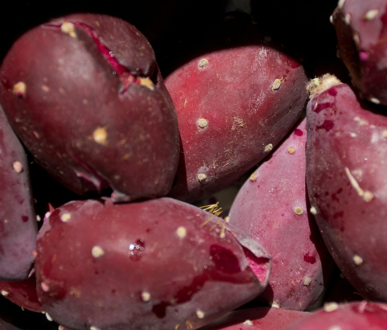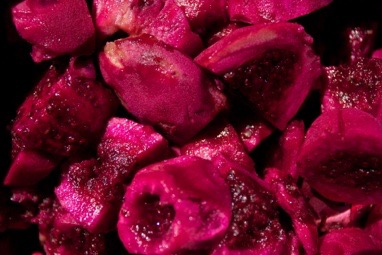
Harvesting tunas can be an experience in itself, a pair of kitchen tongs work well. As for the removal of the glochids, those hair-like spines you see in the photo above, there are several methods -- all of which are characterized as “the way” by their practitioners:
- The indigenous peoples would roll the tunas through the sand to try to wear the glochids off;
- Some people claim you can scorch them off effectively, using a variety of flame producers;
- Some people hold the tunas with tongs and brush the glochids off with a toothbrush or scouring pad;
- Some people peel the tuna; and
- Some people say you don’t have to remove them, instead strain the final preparation through a cheese cloth - that effectively filters out the glochids.
It is easy to rob the bowl of prepared tunas if they are peeled. Makes a wonderful snack, cool and delicious.

Prepared tunas are made into jelly, syrup, and “leather”.
Riper fruit makes for a stronger taste in your final product.
Also called Cactus Pear, Tuna Amarilla, Tuna Blanca, Cactus Fruit, Indian Fig, and Tuna Encarnada. All cactuses originated from the Western Hemisphere.
Cactus seeds have been found in human habitations (caves) dating from 12,000 BP in Mexico, making it one of the earliest domesticated foods.
Now grown as a domesticated crop in many areas of the world - for instance it is called bajtar tax-xewk in Malta where it is a popular summer fruit.
Characterized by low levels of saturated fat, cholesterol, and sodium. Although 8 ounces has only 61 calories (will vary with preparation) that amount of juice provides 21% of your daily fiber requirement and 35% of your vitamin C requirement.